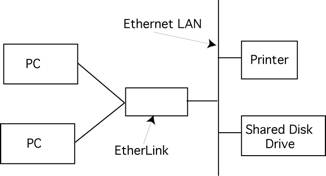Chapter 10 - Networking: Market Competition 1981-1983
10.7 3com
Bob Metcalfe fully grasped the importance of the IBM PC. Nevertheless, he and Bill Krause were committed to their plans to reduce the cost of their Ethernet controller boards: yet he couldn’t resist defocusing their efforts for a few days by dangling out the possibility of building an Ethernet controller for the IBM PC. Krause remembers:
The credit Bob should get here is that he went out and bought an IBM PC and he brought the IBM PC and set it up in the middle of the design lab, and just set it there. And Ron Crane started pouring all over this thing and, before you knew, we understood everything we needed to know. We knew what the power slot budget was, we knew the physical size, we knew the chip count that we had to get to meet the power budget. So we began learning a lot of things.
As tempting as the IBM PC was, Krause kept the company focused on the plan to build a Multibus board and reduce the costs so that a PC Ethernet controller might be possible. At the time, the cost of an Ethernet controller was almost as much as a PC itself
Eyeing the future, Metcalfe and Krause saw they needed more money. So they began talking to venture capitalists. In one of their conversations, another fortuitous connection happened, not an uncommon event when talking to venture capitalists eager to demonstrate the value they could bring as an investor. Krause remembers:
So we’re doing this next second round and Pierre Lamond, who was affiliated with Sequoia Capital, was investigating doing the round and said: ‘Hey, we know this company that’s just getting started that has a lot of technology and we heard that they were looking at using the technology to do an Ethernet chip,’ and it was Seeq. So they introduced me to Gordy Campbell the founder.
Before the end of the year, 3Com and Seeq Technology Inc. began joint development of an Ethernet chip; reason for more optimism and money. In January 1982, 3Com closed a second round of financing totaling just over $2 million. That same month Interlan would introduce their products, products directly competitive with 3Com’s controllers.
In April 1982, management began a series of planning meetings that would culminate in a new product direction for the company. Two former Hewlett-Packard employees brought in by Krause, Lazar (Larry) Birenbaum and Larry Hardke, conceived the EtherSeries strategy - clearly derived from the guiding vision of Metcalfe and the technology in place or under development. EtherSeries was to be introduced in October of that year and would consist of two elements: Etherlink and EtherShare. Etherlink was a board-level Ethernet controller that would fit into an IBM PC and made possible sharing of files between hard disks (storage) and sharing a printer. EtherShare was a file server supporting up to 20 IBM PCs and offered 10 Megabytes of storage. (See Exhibit 8.2 3Com EtherSeries Products.)
Exhibit 10.7.1 3Com EtherSeries

Not having the cash to finance continued development of its existing Multibus and Unibus controllers as well as EtherSeries, the choice was made to divert all funds to EtherSeries. The controllers would be sold for as long as there were profitable customers. Management knew they were making a bet “the ranch” decision.